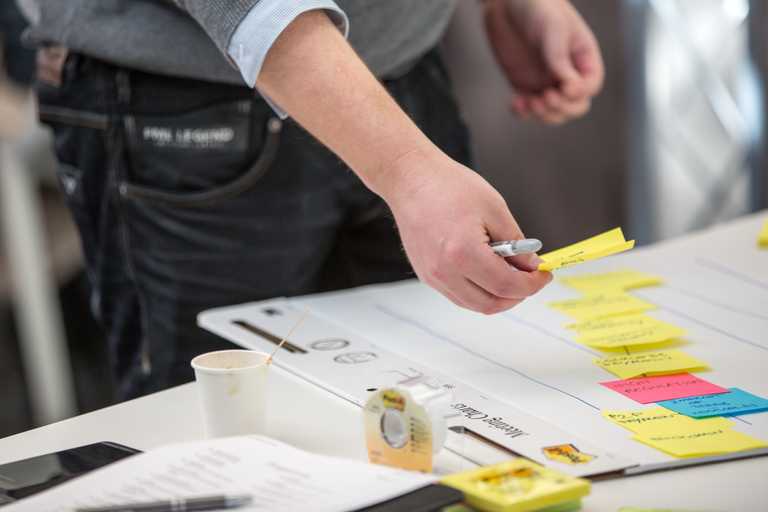Agile Trends to Watch in 2022
As the world is evolving digitally, the world of Agile methodologies is also evolving. Let's discuss what are some of the main Agile trends to watch in 2022.

Agile is no longer just a buzzword. It has set solid roots in the IT industry today. Agile practices took their inception back in 2001 to shift software development from waterfall model to iterative development using XP, Scrum, and other methodologies. But today, Agile is evolving aggressively in optimizing development processes using efficient tools and practices in order to meet the demands of new work environments. Therefore, we are/will see continuous evolvement in Agile with every passing year. Since 2022 is just starting up, let's discuss the key Agile trends to watch in 2022.
Agile Trends in 2022
For years, Agile methodologies are in use in the software industry, but now many other sectors are actively adopting Agile methodologies for enhanced quality and overall productivity. Therefore, it is important for organizations no matter the size and type to know the trends that Agile is/will face in the coming months. Here is a list of all the key trends around Agile to watch in 2022 and upcoming years.
1. Cloud-Based Agile Systems
Cloud computing is already an emerging trend for the past few years, but now Agile teams are also aggressively considering cloud-based solutions to gain a competitive edge and utilize new ways of thinking, testing, and deploying. In fact, those organizations that are using cloud-based Agile systems are found to have achieved enhanced product quality, faster response to market, agility, less cost, more client satisfaction, and similar other benefits. Therefore, we will see more involvement of cloud technology in the Agile methodologies with every passing year.
2. Artificial Intelligence and Machine Learning in Agile
Artificial Intelligence (AI) and Machine Learning (ML) are becoming key elements in Agile best practices. AI and ML bring valuable data sources that can help in better decision-making when analyzed rightly. One of the main benefits of AI and ML in Agile is effective code evaluation and better testing to eliminate bugs. For example, AI can instantly scan through the whole code and provide insights about code vulnerabilities, refactoring opportunities, etc. Similarly, AI/ML-driven automation tools can assist in creating and executing automated tests.
Moreover, AI/ML also brings innovative technologies that assist greatly in better timely software development and releases. In short, the synchronization between Agile methodologies and AI/ML technologies has many fruitful results, and it is just getting better with every passing year.
3. Simpler Agile Tools
The tools used in Agile methodologies usually require prior learning and technical knowledge to use them effectively. However, now the companies that are actively using those tools are trying to develop more user-friendly tools with intuitive interfaces. They are trying to reduce the difficulties associated with key functionalities, such as issue trackers, task backlogs, dashboards, etc. So, what we can expect in 2022 and upcoming years are more user-friendly Agile tools that will make it easy for developers and other personnel to have effective Agile project management.
4. Training or Workshop Session on Short-Term Activities
Another growing trend in Agile-driven organizations is more emphasis on training or workshop sessions on short-term activities. Organizing such short-term training or workshops help Agile teams to have more expertise on specific activities and a better grip on the Agile roadmap. This way, Agile teams can upskill their capabilities to execute short iterations in a more efficient way, thereby improving the overall product quality.
5. Continuous Testing
Agile methodologies consider product testing an integral part of the development process. Teams are acknowledging the fruitful outcomes they can get when they start testing as early as possible. For example, when testing is done in every stage of the development process, it results in faster feedback about the code and early detection of bugs. Therefore, it results in more enhancements in product quality and faster releases of the final product.
Today, there are many tools available for teams to do continuous testing. So, another trend we will see in 2022 is a more aggressive move towards continuous testing using automated testing processes.
6. Relative Estimation
Traditionally, doing estimates of a new feature/product development is based on how much time it would take to develop and release it. The issue with such estimates is that they increase the pressure on teams to ensure delivery as per set deadlines. With Agile, the concept of relative estimation is becoming a new normal for estimating backlog items. In a relative estimation, the product backlog items or user stories are estimated by comparing or grouping them to items with similar difficulty. In simple words, tasks/items are estimated based on the efforts required to complete them not the time. Owing to that, there are many estimation techniques emerging today, such as Planning Poker, Async Poker, T-Shirt Sizing, etc. Considering the benefits of relative estimation, we are expecting more practice of such estimates by Agile-driven organizations.
7. Agile is Expanding beyond Software Development
The basic principles of Agile are not just confined to software development projects. They are equally usable in other areas, such as finance, marketing, human resources, etc. That's why teams in those areas are also seen adopting the best Agile methodologies to handle their complex processes. They are using Agile practices to manage their priorities via an iterative approach and are becoming more open to changes. In short, we will witness more rapid involvement of Agile practices in many others areas in 2022 and upcoming years.
8. Emphasize on Business Value of User Stories
Agile organizations are now emphasizing more on estimating different metrics, such as return on investment (ROI), operational stability, net promoter score (NPS), and similar others. They are using these metrics to project the business value of user stories. Therefore, one of the modern Agile practices we are going to witness is more emphasis on recognizing and analyzing the business values of user stories.
Key Benefits of Agile Methodologies
Other than listing the Agile trends to watch in 2022, it is also important to list down the key benefits of Agile methodologies because many organizations are still reluctant to adopt the Agile framework. Some of the key benefits Agile practices can bring for your organization are as follow:
- Faster Releases: Agile teams can divide a product into smaller executable chunks and then prioritize their workflows accordingly. This way, the team has clear priorities, remains more focused, and ensures faster releases.
- Quality Product: Agile makes testing a core part of the development process and emphasizes frequent testing during every stage of the development. Moreover, clients are kept involved throughout the process. This way, the team manages to deliver more quality products.
- Dynamic Approach: Every iteration in Agile is considered a milestone. The team conducts frequent meetings, engages with stakeholders, analyses the development, and reevaluates the priorities. This way, the development process becomes a lot more versatile.
- Transparency: Agile empowers stakeholders to have continuous visibility on the project not just at the beginning and at the end of the project. They can see the progress and give their feedback at any stage. In short, Agile makes projects more transparent to the main bodies.
- Focused on End-Users: Agile makes everything oriented for end-users. It emphasizes continuous testing and feedback that helps to collect valuable responses from users in real-time after every iteration. Moreover, getting feedback during the development phase makes it easy and quick to execute changes in the features and fulfill users' expectations.
In a nutshell, Agile is a powerful framework that empowers organizations to adopt an iterative development approach, ensure continuous testing/feedback, release faster, and have more satisfied stakeholders/customers
Wrapping Up
Agile is undoubtedly one of the most popular approaches to managing projects, especially in the IT industry. However, Agile is expanding in many industries today owing to its effective incremental and iterative nature. The above ones are some of the main Agile trends that we are likely going to witness in 2022, but there is a lot more to expect from Agile methodologies in the next few years.


